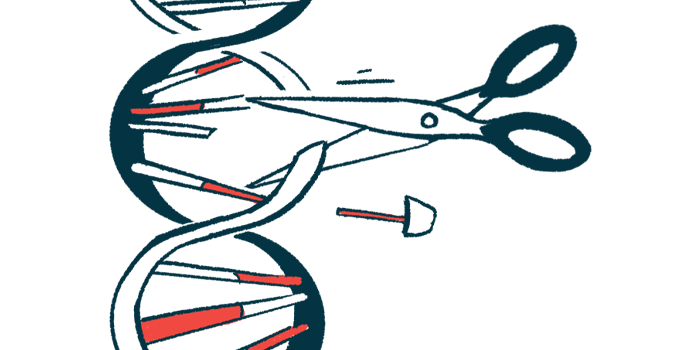Locanabio’s investigational therapy shows promise for C9ORF72-associated ALS
Preclinical studies show it reduced the buildup of toxic RNA molecules

Locanabio‘s investigational therapy significantly reduced the buildup of toxic RNA molecules in amyotrophic lateral sclerosis (ALS) patient cells and mouse models associated with C9ORF72 mutations, according to new data.
These RNA products — intermediate molecules that are produced from DNA as a template for protein production — are associated with the formation of toxic proteins that interrupt cell function in patients with C9ORF72 mutations.
Notably, the CRISPR-based gene-editing therapy did not affect levels of healthy C9ORF72 RNA, which allows production of the C9orf72 protein that may be important for nerve cell function.
The findings were presented in a poster titled, “Cas13d Multi-Targeting Efficiently Targets Sense and Antisense HRE Containing Toxic RNAs and Poly-GP DPR in C9ALS Patient Cells and in C9-BAC500 Mouse Model,” at the American Society of Gene and Cell Therapy (ASGCT) 26th Annual Meeting, held May 16-20 in Los Angeles, California.
Locanabio also presented findings related to its candidate therapy for muscular dystrophy, which also uses CRISPR gene-editing technology.
“We have generated important proof of concept data in both human cell and [animal] disease models that support further development of these product candidates,” Jim Burns, PhD, CEO of Locanabio, said in a press release.
Mutations in the C9ORF72 gene are the most common genetic cause of ALS, found in about 50% of people with familial ALS and 10% of those with sporadic ALS. Similar mutations also can be found in some people with frontotemporal dementia (FTD), a related neurodegenerative condition.
These mutations usually are characterized by the abnormal, excessive repetition of six DNA building blocks, GGGGCC, in the gene’s sequence. Called hexanucleotide repeat expansions, these mutations lead to the production of two abnormal types of RNA molecules inside cells, called G4C2 and C4G2.
Toxic RNA products
These faulty RNA molecules are thought to drive the formation of small proteins that are toxic to cells. Moreover, the toxic RNA products also can directly damage cells by forming certain structures that promote cellular stress.
Locanabio’s investigational therapy is designed to target these problematic RNA molecules for destruction without affecting the production of healthy C9ORF72 RNA.
To do so, it uses a CRISPR/Cas13d-based system. Essentially, specialized “guide” RNA molecules are designed to recognize the G4C2 and C4G2 sequences and lead the Cas13d enzyme to them. Cas13d then causes the toxic RNAs to be degraded.
All components of the therapy are packaged into a harmless viral vector called adeno-associated virus 9 (AAV9), which delivers its contents to cells throughout the body.
CORRECTx platform
The treatment was designed using Locanabio’s CORRECTx platform, which uses CRISPR technology to edit, destroy, or replace harmful RNAs that are implicated in disease.
It previously was found to reduce levels of both G4C2 and C4G2 in lab-grown cells.
Now, the researchers reported that the dual-targeted therapy efficiently reduced levels of both types of toxic RNA in cells obtained from ALS patients with C9ORF72 mutations. It also lowered the amount of toxic proteins produced from those RNA molecules.
When delivered to a mouse model of ALS via a single injection directly under the membrane surrounding the spinal cord, the Cas13d protein was produced successfully in the spinal cord after five weeks with no signs of toxicity.
Both types of toxic RNAs were reduced significantly in the spinal cord after treatment compared with mice given a placebo, but no changes were observed in healthy C9ORF72 RNA levels.
When the therapy was instead delivered directly into the brain, it was similarly found to be well-distributed without signs of weight loss, inflammation, or nerve cell death in the animals. Also, both toxic RNA types — as well as their toxic protein products — were found to be reduced in the brain six weeks after the injections.
Notably, overall levels of healthy C9ORF72 RNA also were not affected by the gene-editing therapy delivered to the brain.
The findings suggest that targeting these toxic repeat expansion-containing RNAs, “could be an effective therapeutic strategy for C9ALS as well as C9ORF72 associated FTD,” the researchers wrote.







